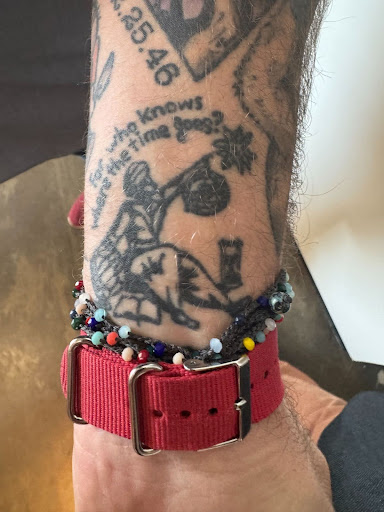This week’s episode took me back to a state I have a lot of fondness for: Alabama. I got to go to a part of the state I’ve never been to before — Escambia County, right on the Florida border. I listened to lots of JJ Grey when I was driving around down there, particularly this tune. If you ever find yourself down there, make sure to check out Camp 31 BBQ where I ended up having a heart-to-heart with high school student Carlie Tait about the journalists who were jailed in her backyard. (I forewent my normal pescatarianism and had some brisket, it was great.)
At the end of last month, I got an excuse to go back to Alabama again. The University of Alabama at Birmingham invited me to give a talk about my podcast S-Town, and hundreds of people came out for it, including lots of folks from Bibb County, where S-Town (aka Shittown) took place.


It’s been eight years since S-Town came out (this week basically!), and a lot has happened since then, to me and to people in the story. Lives have begun and ended in that time, sometimes tragically. My colleagues and I have fought legal battles, tried making a film, and honored John B McLemore with a national exhibit of his clock restoration work. John’s friend Cheryl Acker Dodson has traveled the state training thousands of people in suicide prevention. I revisited the show on this very podcast with KCRW, Question Everything, talking to a critic who thought it was “morally indefensible.” I spoke about it to a sold-out crowd at the Sydney Opera House.
S-Town was about life, and like life, I find the story has had its own ups and downs, its own troubles and highlights, sometimes in jarringly sharp succession. But this event in Birmingham was definitely a highlight, up there with the most special S-Town-related experiences I’ve had. Before and after the event, I got to connect with a bunch of people who’d been touched by S-Town in different ways. Starting with the director of the performing arts center that was hosting me — Heath Mixon — who, when I shook his hand, held out his forearm to show me his S-Town-inspired tattoo:


I immediately knew that figure, underneath “For who knows where the time goes?” That’s the image of a Moorish scholar, with an hourglass nearby, pointing an astrolabe at the sky. John B. McLemore drew that image and made it the logo for his clock restoration business.

I have a bunch of John’s invoices from over the years and that logo is at the top.

Talk about a true John B. McLemore stan. Very cool Heath.
After the talk, we had a Q&A, and all sorts of people stood up to ask questions or share thoughts. A few people asked good questions about the history of outsiders coming into the South to tell stories about it. The editor of Bibb County’s local newspaper, The Centreville Press, showed up in what he proudly called the Alabama uniform — denim overalls — and talked about where S-Town fits in the canon of Alabama stories, specifically bringing up To Kill A Mockingbird.
I got to talk to a few local journalists, actually, including John Archibald, who’s legendary in Alabama for winning two Pulitzer Prizes, including one jointly with his son, Ramsey, for an investigation they both reported into a small-town police department. (Check out this amazing photo of them getting the news.)
I also caught up with Will Dahlberg, who runs the public radio station in Birmingham, WBHM. He told me about a proposed state law that would require all Alabama state entities to refer to the Gulf of Mexico as the “Gulf of America,” which would put WBHM in a tricky spot, as they’re licensed to a state university. This means, if the law passes, they’d be in a position where the state government is legislating the words they’re allowed to use on air — not very First Amendment-friendly. (That might be a situation I want to have another conversation with Carlie about.)
The most unforgettable interaction for me, though, had to be with one young person who stepped up to the mic during the Q&A. I could see them trembling, they were so nervous. “I’m a queer, mentally ill person from Woodstock, Alabama,” they said. “And I just wanted to thank you for telling John’s story. It was a love letter to me.” And then they turned and bolted to their seat.
That one made me tear up on stage. To think that a story I made nearly a decade ago could resonate so much with someone, especially in the place the story was about — there’s nothing more gratifying. It’s a hard time to stay optimistic about journalism, so I try to keep moments like that in my pocket for when I’m feeling down.
Till next time, Alabama.
Brian